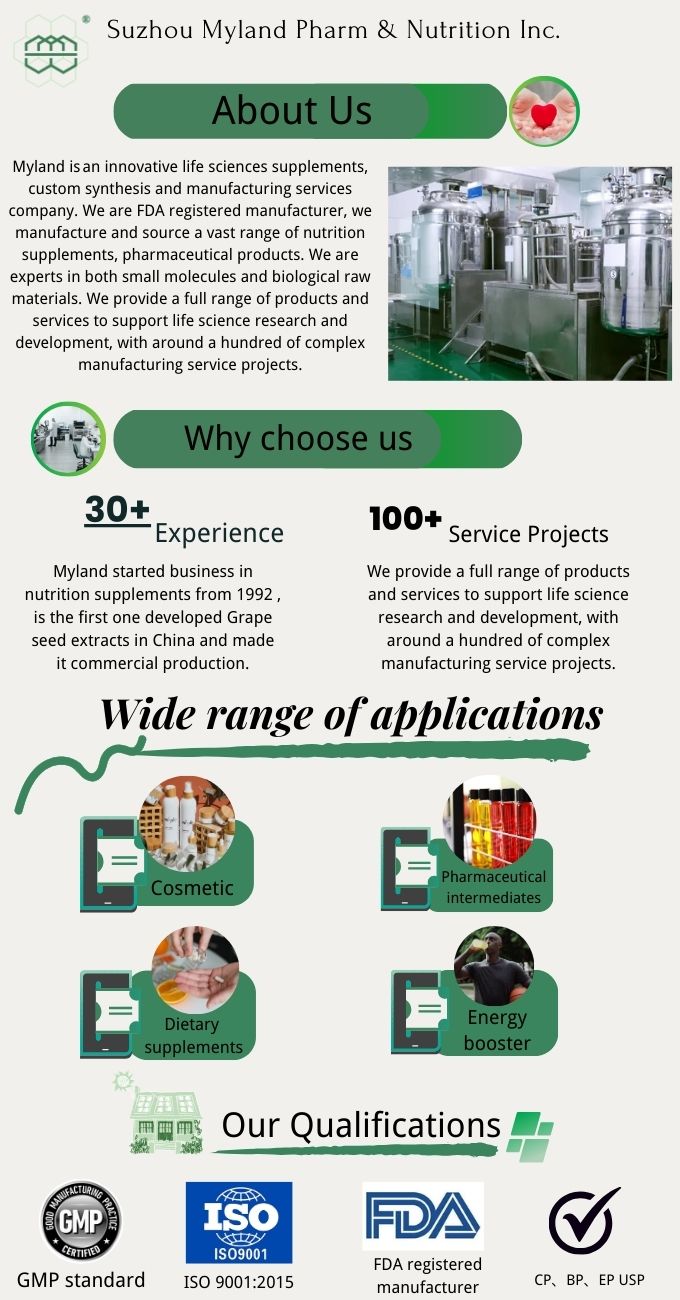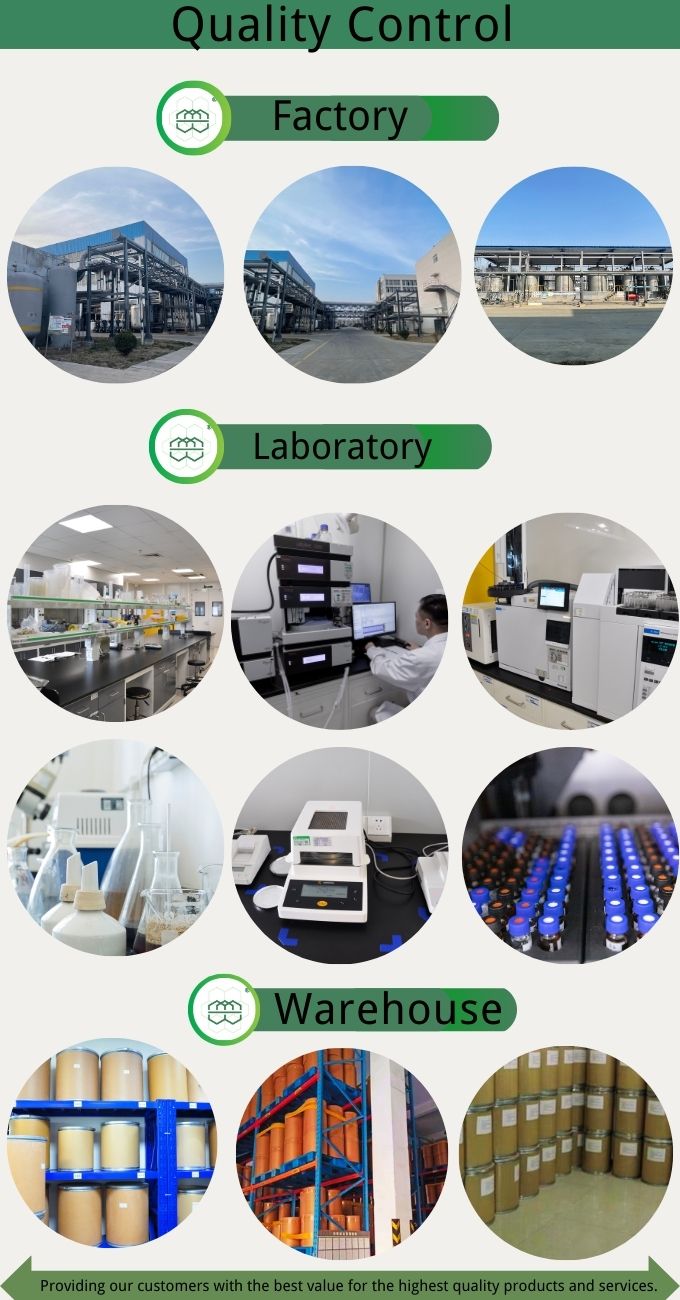
 Audited Supplier
Audited Supplier
In This Store
Category:Natural Extracts > Nutrition & Health Product Raw Materials
Product Name:Oleoyl ethanolamide CAS No.:111-58-0 98.0% ,85.0% purity for Anti-inflammatory
CAS No.:111-58-0
Standard:USP, BP, EP
Price(USD):Negotiable
Company:SUZHOU MYLAND PHARM & NUTRITION INC.
Grade: Food Grade
Factory Location: Suzhou, Jiangsu
Main Sales Markets: North America,Central/South America,Western Europe,Eastern Europe,Australasia,Asia,Middle East,Africa
Monthly Production Capacity: 100kg
Contract Manufacturing: CMO
Packaging Information: 1kg/bag;25kg/drum
Delivery Lead Time: About five days
Sample Provided: yes
Payment Terms: D/P
|
Product name |
Oleoyl ethanolamide |
|
Other name |
N-oleoyl ethanolamine; N-(2-hydroxyethyl)-,(Z)-9-Octadecenamide |
|
CAS No. |
111-58-0 |
|
Molecular formula |
C20H39NO2 |
|
Molecular weight |
325.53 |
|
Purity |
98.0% ,85.0% |
|
Appearance |
Fine white crystal powder |
|
Packing |
1kg/bag, 25kg/drum |
|
Application |
Pain relief, anti-inflammatory |
1.Product introduction
OEA is derived from the omega-9 monounsaturated fatty acid oleic acid. It is considered an endocannabinoid-like lipid, a receptor activated by peroxisome proliferator alpha (PPAR-alpha) that interacts with and mediates anti-inflammatory processes. The bioactive lipid amide OEA is synthesized in the gastrointestinal tract and is associated with multiple unique homeostatic properties, including anti-inflammatory activity, immune response, stimulation of lipolysis, and fatty acid oxidation. Furthermore, the fatty acid ethanolamide is a lipid mediator that regulates a large number of physiological functions. As a biologically active lipid mediator, oleoylethanolamide (OEA) is a potent agonist of peroxisome proliferator-activated receptor-α (PPAR-α) and can regulate the increased expression of fatty acid transferase CD36 , thereby regulating eating behavior. In addition, OEA is an endogenous fatty acid ethanolamine produced in the intestinal mucosa. OEA anorexigenic signaling may be an essential element of the physiological and metabolic systems that regulate dietary fat intake and obesity. Ingestion of oleic acid, and the resulting OEA that confers anorexic characteristics, depends on CD36, PPAR-α, intestinal fat sensory receptors, histamine, oxytocin, and dopamine; leading to increased fat oxidation and energy expenditure, thereby producing a feeling of satiety and increases feeding latency; any disruption in these systems halts or inhibits fat-induced satiety.

2.Features
(1) High purity: OEA can obtain high-purity products through natural extraction and refining production processes. High purity means better bioavailability and fewer adverse reactions.
(2) Safety: OEA has been proven to be safe for the human body. Within the dosage range, there are no toxic side effects.
(3) Stability: OEA has good stability and can maintain its activity and effect under different environments and storage conditions.
(4) Easy to absorb: OEA can be quickly absorbed by the human body and distributed to different tissues and organs.
3.Application
Oleoylethanolamide is a natural ethanolamide lipid used as a dietary planning and body weight regulator in a variety of vertebrate species. It is a metabolite of oleic acid formed in the human small intestine. Oleylethanolamide (OEA) is a molecule that regulates lipid metabolism and energy homeostasis. It sticks to PPAR Alpha receptors and helps control four factors: hunger, body fat, cholesterol and weight. PPAR Alpha represents peroxide proliferator-activated receptor alpha, and the bioactive lipid amide oleoylethanolamide (OEA) has a variety of unique homeostatic properties, including anti-inflammatory activity, immune response modulation, and antioxidant effects.




Contact Us
Tel: (+86) 400 610 1188
WhatsApp/Telegram/Wechat: +86 13621645194
Follow Us:




 Pharma Sources Insight June 2024: Globalization on the Go
Pharma Sources Insight June 2024: Globalization on the Go


